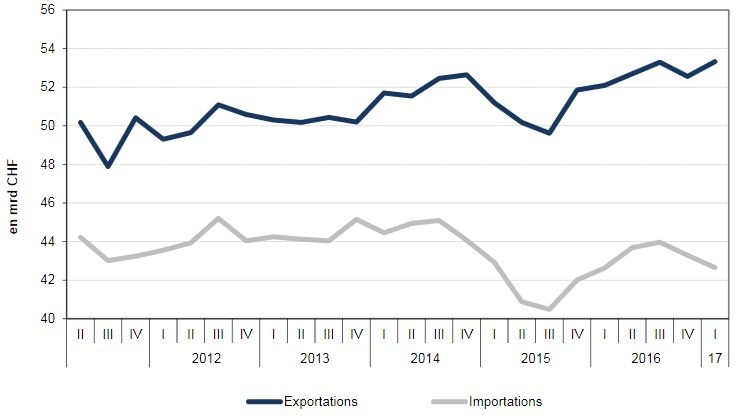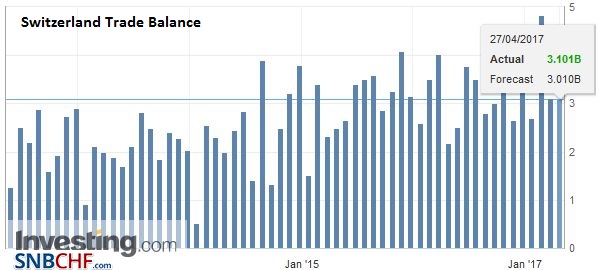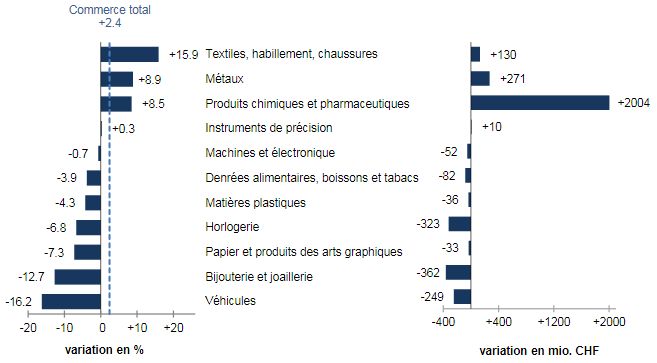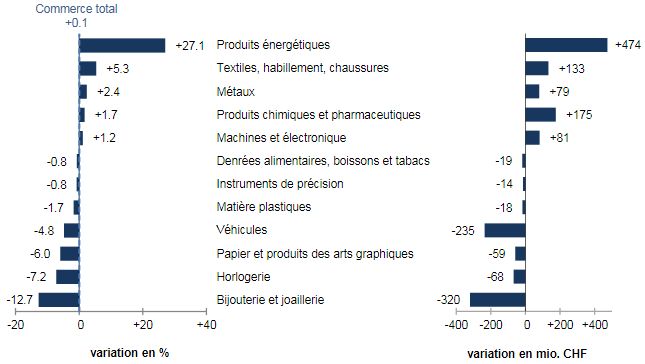We do not like Purchasing Power or Real Effective Exchange Rate (REER) as measurement for currencies. For us, the trade balance decides if a currency is overvalued. Only the trade balance can express productivity increases, while REER assumes constant productivity in comparison to trade partners. On the other side, a rising trade surplus may also be caused by a higher savings rate while the trade partners decided to spend more. Recently Europeans started to increase their savings rate, while Americans reduced it. This has led to a rising trade and current surplus for the Europeans. To control the trade balance against this “savings effect”, economists may look at imports. When imports are rising at the same pace as GDP or consumption, then there is no such “savings effect”. After the record trade surpluses, the Swiss economy may have turned around: consumption and imports are finally rising more than in 2015 and early 2016. Swiss National Bank wants to keep non-profitable sectors alive Swiss exports are moving more and more toward higher value sectors: away from watches, jewelry and manufacturing towards chemicals and pharmaceuticals. With currency interventions, the SNB is trying to keep sectors alive, that would not survive without interventions.
Topics:
George Dorgan considers the following as important: Featured, newsletter, Swiss Macro, Switzerland Exports, Switzerland Exports by Sector, Switzerland Imports, Switzerland Imports by Sector, Switzerland Trade Balance
This could be interesting, too:
Nachrichten Ticker - www.finanzen.ch writes Die Performance der Kryptowährungen in KW 9: Das hat sich bei Bitcoin, Ether & Co. getan
Nachrichten Ticker - www.finanzen.ch writes Wer verbirgt sich hinter der Ethereum-Technologie?
Martin Hartmann writes Eine Analyse nach den Lehren von Milton Friedman
Marc Chandler writes March 2025 Monthly
We do not like Purchasing Power or Real Effective Exchange Rate (REER) as measurement for currencies. For us, the trade balance decides if a currency is overvalued. Only the trade balance can express productivity increases, while REER assumes constant productivity in comparison to trade partners.
On the other side, a rising trade surplus may also be caused by a higher savings rate while the trade partners decided to spend more. Recently Europeans started to increase their savings rate, while Americans reduced it. This has led to a rising trade and current surplus for the Europeans.
To control the trade balance against this “savings effect”, economists may look at imports. When imports are rising at the same pace as GDP or consumption, then there is no such “savings effect”.
After the record trade surpluses, the Swiss economy may have turned around: consumption and imports are finally rising more than in 2015 and early 2016.
Swiss National Bank wants to keep non-profitable sectors alive
Swiss exports are moving more and more toward higher value sectors: away from watches, jewelry and manufacturing towards chemicals and pharmaceuticals. With currency interventions, the SNB is trying to keep sectors alive, that would not survive without interventions.
At the same time, importers keep the currency gains of imported goods and return little to the consumer. This tendency is accentuated by the SNB, that makes the franc weaker.
Texts and Charts from the Swiss customs data release (translated from French).
Exports and Imports YoY DevelopmentFrom January to March 2017, exports adjusted for the number of working days increased by 2.4% (real: -0.1%) while imports stagnated (real: -4.2%). On release, the growth is based on the chemicals – pharma sector, without which results a decrease of 2.5%. The trade balance loops with a record surplus of 10.8 billion francs. ▲ Exports of chemistry-pharma: +2 billion francs over one year ▲ Metal exports: highest level since mid – 2011 ▼ Aeronautics trade hit the nose in the first quarter of 2017 ▼ Strong drop in exports to the Middle East |
Swiss exports and imports, seasonally adjusted (in bn CHF), March 2017(see more posts on Switzerland Exports, Switzerland Imports, ) Source: Swiss Customs - Click to enlarge |
Overall EvolutionDuring the first quarter of 2017, adjusted exports of working days rose by 2.4% in nominal terms and stagnated in real terms. Compared with the last quarter of 2016 (also seasonally adjusted), they rose (+ 1.5%, real: -0.0%). Overall, outflows have shown a positive trend since the third quarter of 2015. Imports have been flat on a year; In real terms, they fell by 4.2%. After seasonal adjustment (compared with the previous quarter), they declined by 1.5% (real: -4.3%), confirming their decline in autumn 2016. |
Switzerland Trade Balance, March 2017(see more posts on Switzerland Trade Balance, ) Source: Investing.com - Click to enlarge |
Exports
Three commodity groups showed an increase in exports. Chemicals and pharmaceuticals alone posted +2.0 billion francs. The other sectors, on the other hand, have stagnated or declined. The rise of the textile, clothing and footwear segment was driven by the return of goods. Metal sales increased 9%. In the pharmaceutical sector, immunological products rose by CHF 1.0 billion, compared with EUR 739 million for medicines. The machinery and electronics group flirted with its level of last year. While shipments of machinery fell by 3%, electronics and electronics items rose by 3%. Watchmaking (-323 million), jewelry and jewellery (-362 million) and vehicles (-249 million francs) were particularly affected. On the continents, exports increased to North America (+ 6%) and Europe (+ 3%) while stagnating towards Asia. At the country level, Germany (+743 million francs), China (+522 million) and the USA (+473 million) contributed the most to growth, stimulated by chemicals and pharmaceuticals. On the other hand, Saudi Arabia (-303 million) and Qatar (-270 million) dipped, led by aeronautics as well as jewelry. |
Swiss Exports per Sector March 2017 vs. 2016(see more posts on Switzerland Exports, Switzerland Exports by Sector, ) |
ImportsIn the first quarter of 2017, imports stagnated. Evolution between the different groups was mixed, ranging from + 27% for energy products (+474 million francs, real: -3%) and -13% for jewelry (-320 million ; Real: -20%). The chemicals, pharmaceuticals and the textile, clothing and footwear group have been at the forefront. For the former, immunological products rose by 524 million francs from 462 million francs for medicines; At the same time, the active principles have, however, fallen by half a billion francs. Machinery and electronics grew by 1%. In vehicles, aeronautics (-543 million francs) tipped the result in the red figures; Passenger cars accelerated by 3% (units: + 2%). In terms of geography, imports from Europe (EU: + 1%) and Asia have stagnated, while those in North America (-3%, USA: aeronautics) and Latin (-6%) Contracted. On the Old Continent, Germany’s leap (+598 million francs) contrasted with the decline in France, Ireland (pharma) and Austria. On the Asian side, shipments from Singapore and Kazakhstan (oil) fled, while those from China and Qatar (jewellery). |
Swiss Imports per Sector March 2017 vs. 2016(see more posts on Switzerland Imports, Switzerland Imports by Sector, ) |
Tags: Featured,newsletter,Switzerland Exports,Switzerland Exports by Sector,Switzerland Imports,Switzerland Imports by Sector,Switzerland Trade Balance


